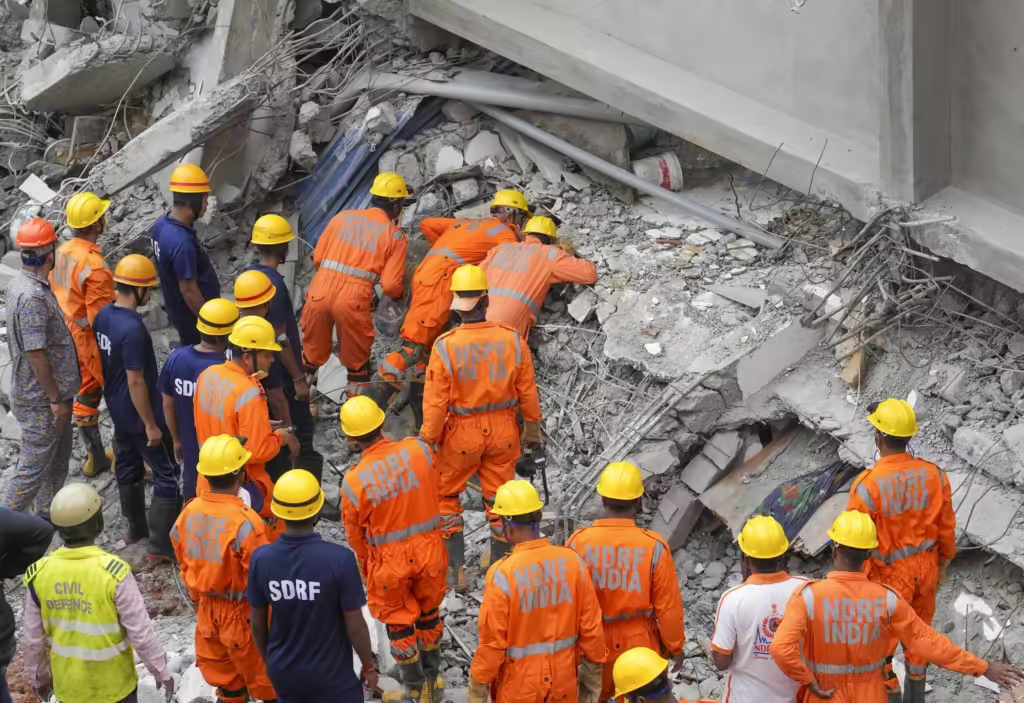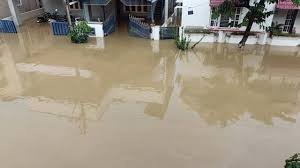Key Highlights:
After weeks of torrential rains, Bengaluru is seen badly devastated on its infra. It actually brought out comparisons to Venice. Roads look like rivers and flooding homes and severe traffic snarls have paralyzed daily life. This crisis has turned out to be a political war of words, with HD Kumaraswamy, former Karnataka Chief Minister, accusing the Congress-led government of transforming the city into a “Venice” instead of delivering the promised “London” infrastructure. But how did a few days of rain manage to bring one of India’s most important cities to its knees?
The Unchecked Urbanization Locking Down Bangalore
Bengaluru is India’s Silicon Valley, and now the city is in a busting state of the IT industry. The developments took place in the city largely in uncontrolled terms of its infrastructure. This was resulting in haphazard city development and shortcomings in drainage, which at present makes many pockets in the city waterlogged zones during the rains. In hasty overflow, water began to spill from the sudden surge in the badly disfigured and deserted roads; traffic moved grudgingly for hours along Outer Ring Road, Hosur Road, and Bannerghatta Road. Water entered homes – specially low-lying ones, further stranding citizens and commuters.

Political Fallout: Blame Games and Criticism
Political leaders seized the chance to lash out at the Congress government for the latter’s inept handling of Bengaluru’s urban infrastructure: the Bharatiya Janata Party (BJP) and the Janata Dal (Secular). BJP leader PC Mohan and Bengaluru South MP Tejaswi Surya let off steam on social media: “Now is not the time for Band-aid solutions for the city’s long-term problems,” they said. Kumaraswamy’s “Venice” metaphor stuck in people’s heads, with people themselves attributing the acuteness of the crisis.

Congress leaders defended their administration instead. Karnataka Deputy Chief Minister DK Shivakumar said his government would try to fix the problems. “Some parts of the city have not been well-oiled by rains for causing groundwater recharge,” he argued. Though verbal steps were taken by Shivakumar, his words hardly soothed the agitated minds of the people who are still suffering from crumbling roads and untrustworthy municipal service.
Schools Shuttered, Buildings Collapse and Traffic Snarled
With the rain pounding the city, schools closed due to fear of safety. Work and education became a nightmare for parents and their children. Older buildings suffered from waterlogging; one of the buildings even collapsed and several were evacuated as precautionary measures.
Traffic jam became the new substitute, whereby several parts of the city experienced gridlocks which, at times, lasted for hours. Places like Panathur Main Road recorded cars moving through water-logged streets while public transport in the city remained an afterthought to the increased demand. The city’s vaunted IT parks, housing some of the biggest names in IT, were also not spared as the employees could not report to work on time or work from home because of the network cuts.
What’s in the Future: Structural Reforms Called For
The rains in Bengaluru have spelled one thing clearly-the city’s infrastructure needs a structural overhauling. Experts and citizens are demanding long-term reforms rather than short-term corrective measures. Urban planning needs to reflect and account for the geographical and environmental conditions of Bengaluru. Now, if the city must be empowered to withstand future rains and to avoid what happened recently, it will have to look into issues of waste management, stormwater drains, and traffic control systems first.
However, any steps that are taken, the rhetoric of “fixing” the issues has seemed shallow to many, and there is a certain derisive skepticism associated with what he promises. Whatever is done, perhaps the issues in the city run too deep for them to be solved by these cosmetic measures. Climate change may also ensure that the extreme weather would become more regular, thereby further straining Bengaluru’s infrastructure. Unless an overall plan is put in action, the city risks more frequent “Venice-like” episodes.
Conclusion: Resilient Urban Planning
The shroud of infrastructural incompetence that has overtaken the once tech-savvy Bengaluru turned it into a damp, waterlogged mess, necessitating complete revisiting of the severity of such shortcomings. While the political level is too engrossed in the blame game, the very constituency of the city sits in the hospitals in the aftermath of the rains. Be it structural developments, the government needs a change for an effort toward resilient urban design and long-term sustainability. Only then will Bengaluru hope to be India’s Silicon Valley, without suffering the near-anarchy that a few days of rain have unleashed on the city.
For Latest News Updates Click Here
